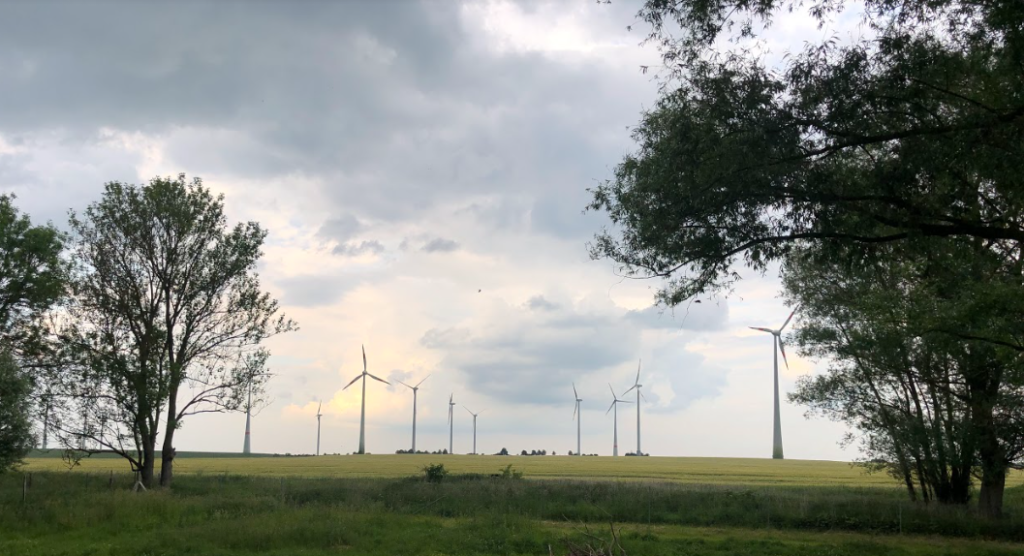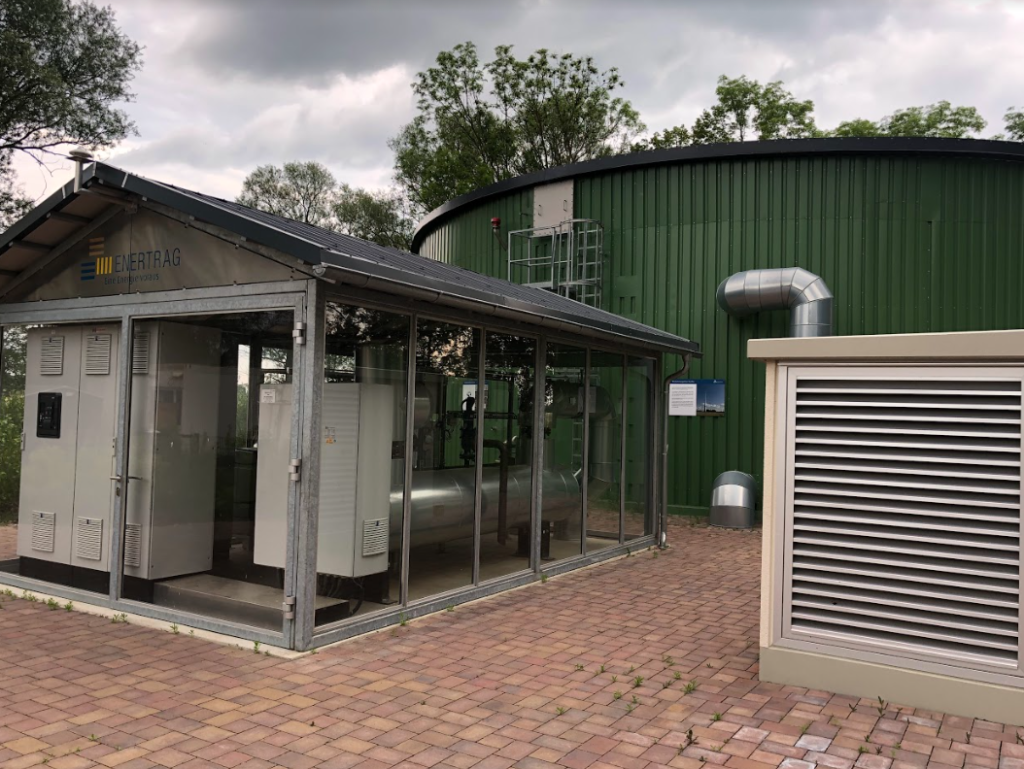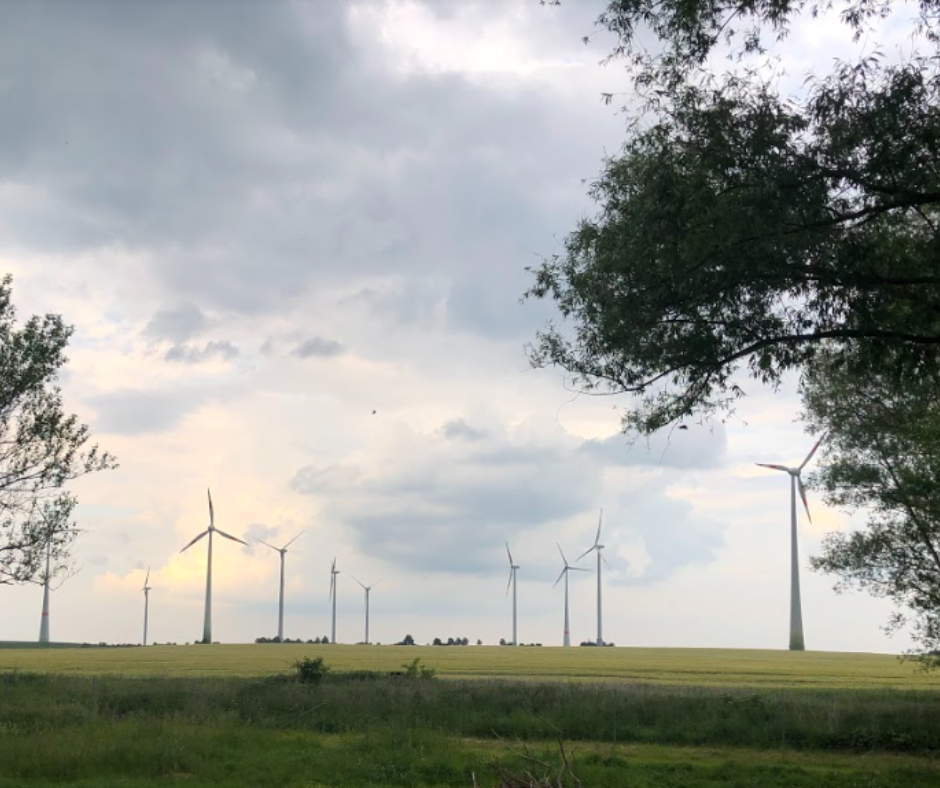Germany is a leader in energy efficiency in Europe: by 2050, the country has set itself the goal to reduce primary energy consumption by 50%. The German village of Nechlin has already reached this goal. Due to the created energy cooperative, the village annually produces more than 65 million kWh of energy, almost a hundred times more than the residents need for their consumption.
The article tells how residents wholly switched to using renewable energy sources and what benefits this brings to the village.
Nechlin is a village full of energy
The total energy production of all systems is approximately 300,000 kilowatt-hours (kWh) per year (with a village energy consumption of about 1,000,000 kWh). Among them:
– heat and power plant on rapeseed oil (with a capacity of 25 kW),
– diesel thermal power plant on rapeseed (with a capacity of 5 kW). The rapeseed oil diesel works as an autonomous synchronous generator and automatically takes over the local power supply even in the event of a mains failure.
– pellet boiler (power 30 kW),
– solar heating system (with a capacity of 20 kW)
– 11 photovoltaic systems (45.5 kW) are located on the roofs of buildings. Photovoltaic systems transport electricity to the public grid and, with the help of backup power from the battery, undertake part of the emergency power supply.

Also, there is the wind power station “Uckermark”, which is located outside the village. Wind turbines generate approximately 65,000,000 kWh of energy per year. Therefore, a significant remainder is transported to Berlin.

The method of transmission and use of energy
The wind power plant and solar systems in Nechlin are connected through their own network. This allows locals to use energy internally that cannot be transferred to the general network. This method is a combination of generation, conversion of energy and its consumption on site.
Nechlin is heated with the help of a wind heat storage system. For this, a significant part of wind energy is used.

A small part of the energy – about 5% – is produced on particularly windy days, called “peaks” (when the wind at a speed of 16 m/s brings 64 times more electricity). Energy peaks occur approximately 25 times a year, and their duration is about 10 hours. So instead of shutting down the wind turbines and turning them off entirely on “peak” days, wind energy is stored in a heat storage tank: the water is heated by electricity and stored as thermal energy. This energy is fed into the local district heating network to heat a home.
The local heating network in Nechlin (distribution network in the ground and energy center) is financed by the state and belongs to a separate company, “Wärme für Nechlin GmbH&Co KG”. Most households in Nekhlin are connected to this local heating network. The contract price is adjusted so that it is always cheaper than using fossil fuels.
Benefits for the community from the use of renewable energy
Since the village is sufficiently provided with energy produced from local resources, it can sell its overabundance. Proceeds from the sale are directed to the construction of infrastructure facilities: a local heating network, public transport stops, roads, and fire department premises.
In addition, renewable energy production helps create new jobs, so people stay in the village instead of leaving it in search of better work.
It is also a concern for the environment: the operation of the heat and power system annually saves 200 tons of greenhouse gas emissions into the air if compared with oil heating systems of houses.
Technical implementation of the wind power plant project “Uckermark
A 20,000-volt medium voltage cable connects the wind turbines to a 2-megawatt continuous flow heater. The water is heated to 93 degrees Celsius and fed to the wind-driven heat accumulator.
From there, warm water (if necessary) enters the local district heating network.
The wind heat accumulator can hold up to a million liters of water. On windy days, the storage tank heats up in a few hours. Then, if necessary, the storage tank gives energy to the local heating network, which provides heat to 35 houses. The total capacity of the wind heat accumulator is 38,000 kilowatt-hours.
Once heated and charged, it can power Nechlin for two weeks.
The russian war and the energy crisis caused by it show how important it is for Ukrainian communities to develop their energy independence. How to start your journey to energy self-sufficiency? What should be done about this? Find answers to these and other questions in the guide for representatives of local self-government bodies from Ecoclub and Ecoaction. Or in the online course “Local energy projects: where can small businesses and public enterprises find the money for projects in the energy field and not only”.
Suppose you are interested in the Nechlin’s experience and want to learn more about how the village abandoned the use of gas and completely switched to alternative energy sources. In that case, Ecoclub is ready to share the contacts of partners. Please send your questions to office@ecoclubrivne.org
This article is prepared within the framework of the Environmental Policy and Advocacy Initiative in Ukraine that has been implemented by the International Renaissance Foundation and enabled by the financial support from Sweden.
Views, conclusions or recommendations belong to the authors of this article and do not necessarily reflect the official position of the Government of Sweden. The responsibility over the content lies solely with authors of this article – the NGO Ecoclub.












